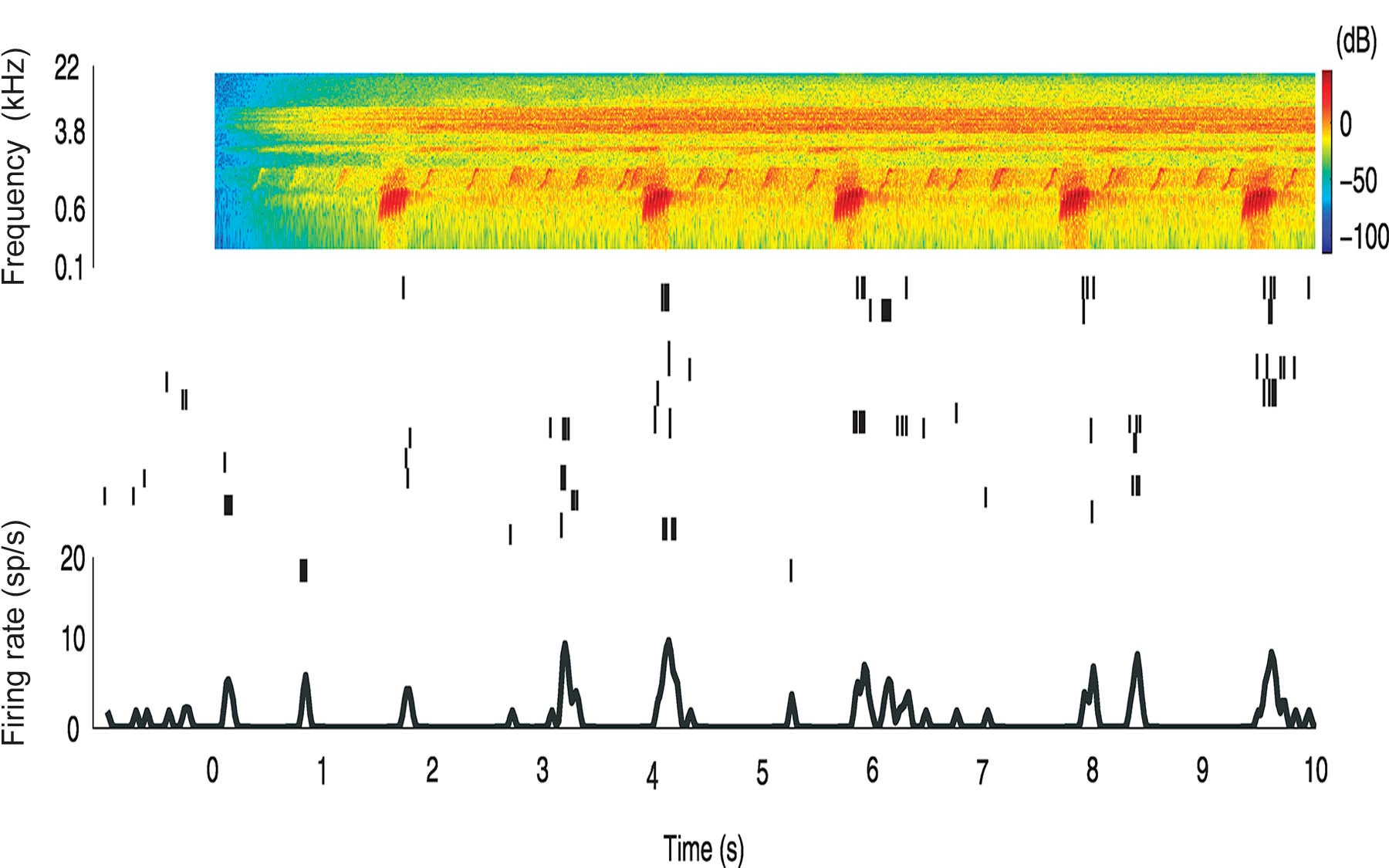Surprisingly few auditory neurons may be involved in zeroing-in on a particular sound
Cold Spring Harbor, NY — Scientists at Cold Spring Harbor Laboratory (CSHL) have reported new findings about how the mammalian brain interprets and fashions representations of sound that may help explain how we are able to focus on one particular sound among many in noisy environments such as offices or cocktail parties.
Neurons in the brain’s auditory cortex interpret incoming sound signals and send them to the rest of the nervous system, in the brain and spinal cord. Using rats, the CSHL team discovered that a very small minority of available auditory neurons react strongly when exposed to any specific sound.
“This finding challenges the standard model of sound representations in the auditory cortex, which predicts that neural representations of stimuli often engage a large fraction of neurons,” said Anthony Zador, Ph.D., CSHL professor and corresponding author of a research paper published today in the journal Public Library of Science: Biology.
The researchers used a new technique called “in vivo cell-attached patch clamp recording” which measures the reaction of individual neurons. This recording technique samples neurons in a fair and unbiased way, unlike traditional approaches, which favored the largest and most active neurons. Using this technique, the team found that only 5% of neurons in the auditory cortex had a “high firing rate” when receiving a range of sounds of varying length, frequency, and volume. The experiment included white noise and natural animal sounds.
The team’s objective was to quantify the relative contributions of different sub-populations of neurons in response to the range of sounds. Most of what is known about the auditory cortex of the mammalian brain comes from studies of the anesthetized cortex. The results of the experiments reported today are important partly because they measure the response of neurons in rats that were not anesthetized. In animals that are awake, it’s possible to measure the response over an interval of time to one sound among many that are co-occurring.
This is the approach the Zador lab has taken to explain “selective attention,” or what Dr. Zador calls “the cocktail party problem.” Half of the neurons measured in the reported experiments showed no reaction at all to incoming stimuli. The researchers hypothesize that each neuron in the auditory cortex may have an “optimal stimulus” to which it is particularly sensitized.
“Your entire sensory apparatus is there to make successful representations of the outside world,” said Dr. Zador, who is director of the CSHL Swartz Center for Computational Neuroscience. “Sparse representations may make sensory stimuli easier to recognize and remember.” Recognizing the brain’s ability to distinguish “optimal stimuli” could help scientists find ways to improve how sounds are learned. Prior research has already yielded similar results when measuring sight, movement, and smell. This is the first evidence of a correlation between sparse representations and hearing.
“The goal of sensory processing is to take a signal, like a sound or a vision, from your environment and use it to drive behavior,” said Dr. Zador. “The brain needs to recognize and learn about these inputs in order to survive.”
Written by: Communications Department | publicaffairs@cshl.edu | 516-367-8455
Citation
“Sparse Representation of Sounds in the Unanesthetized Auditory Cortex” appears in Public Library of Science: Biology on January 28. The compete citation is as follows: Tomáš Hromádka, Michael R. DeWeese, Anthony M. Zador. The paper is available online at: https://journals.plos.org/plosbiology/article?id=10.1371/journal.pbio.0060016
